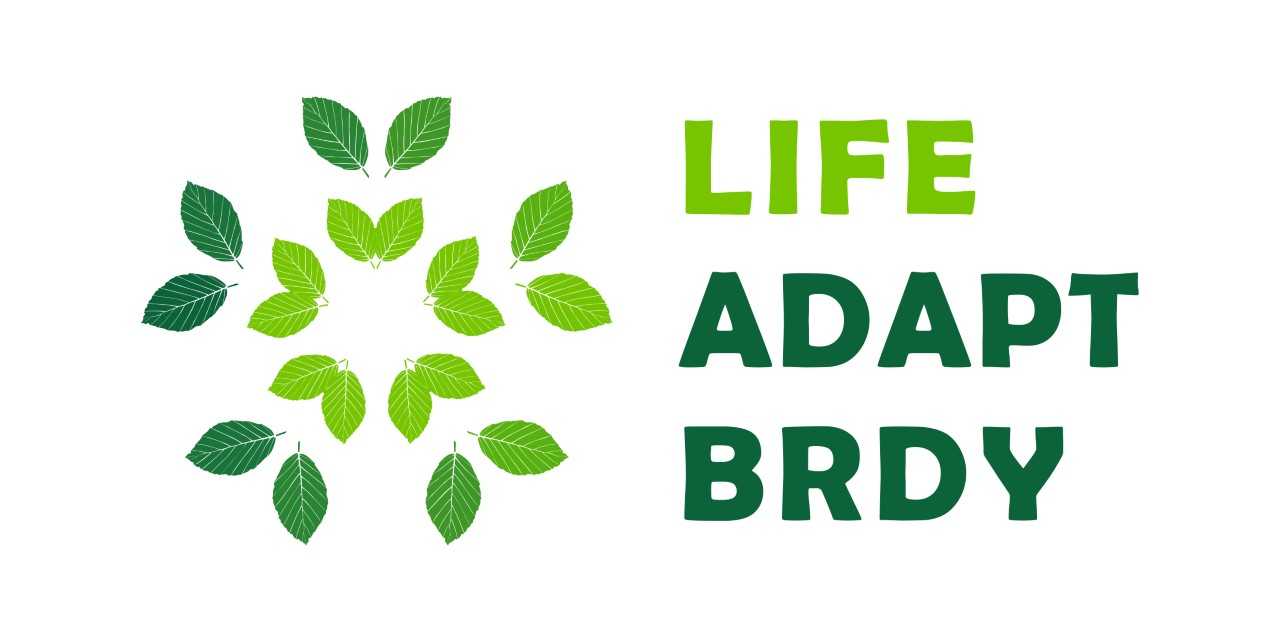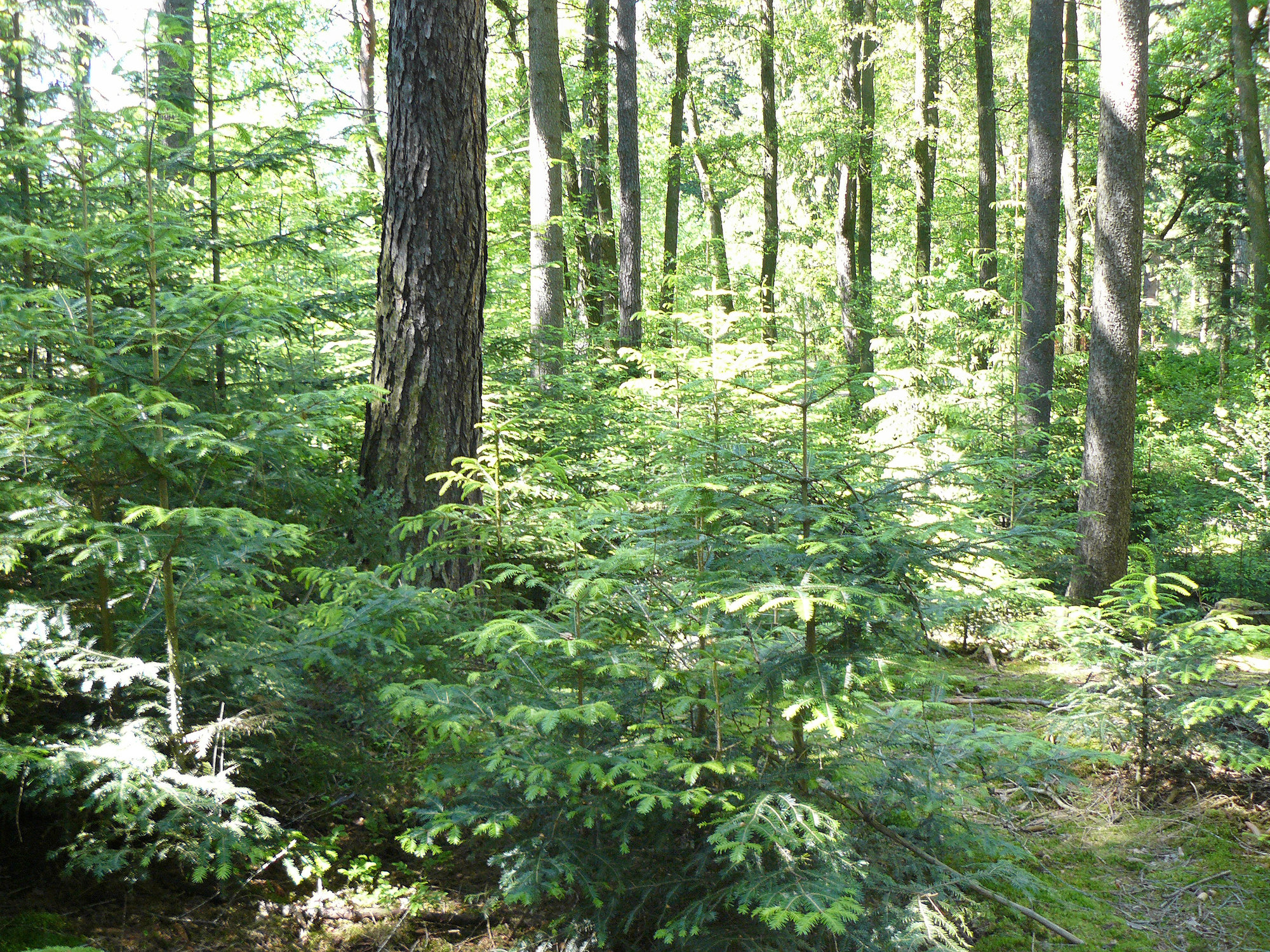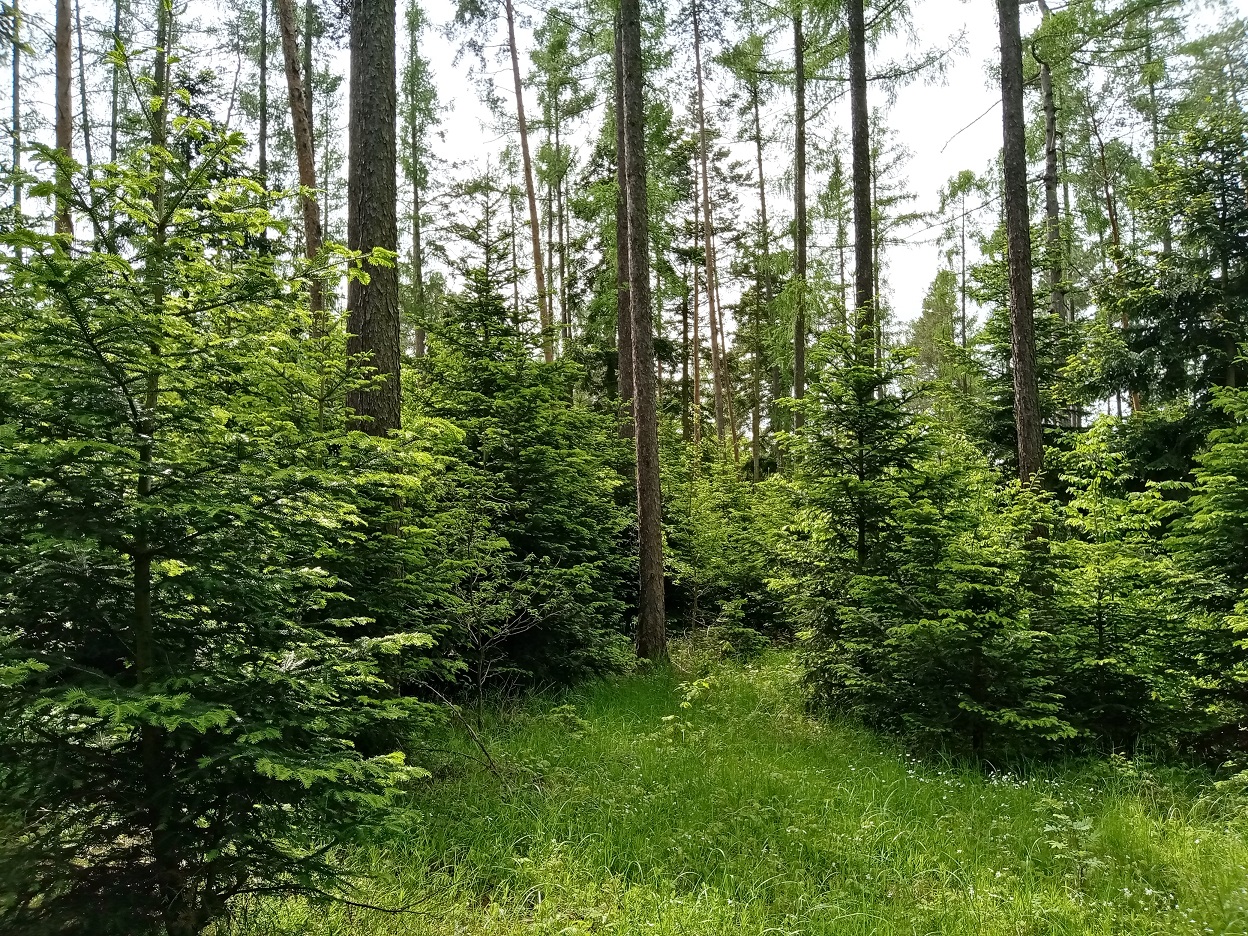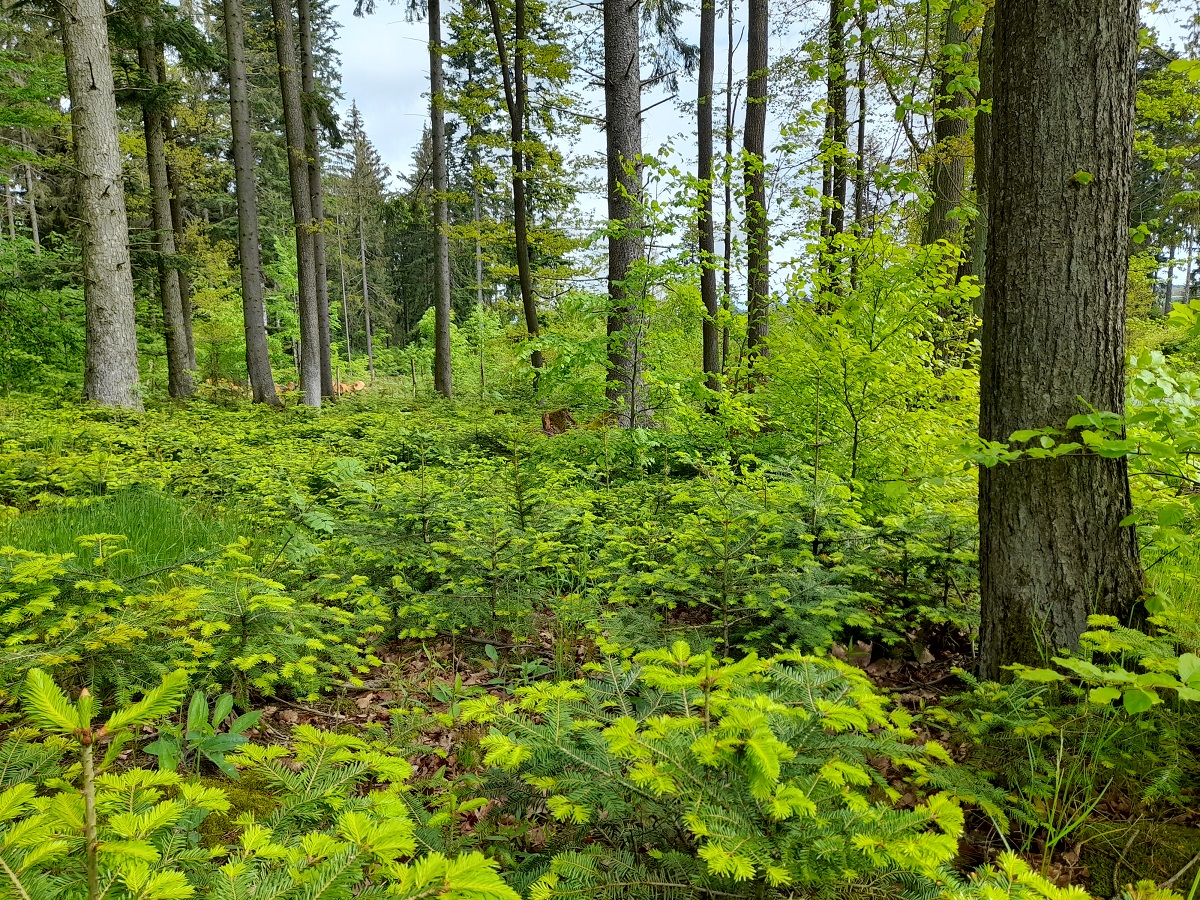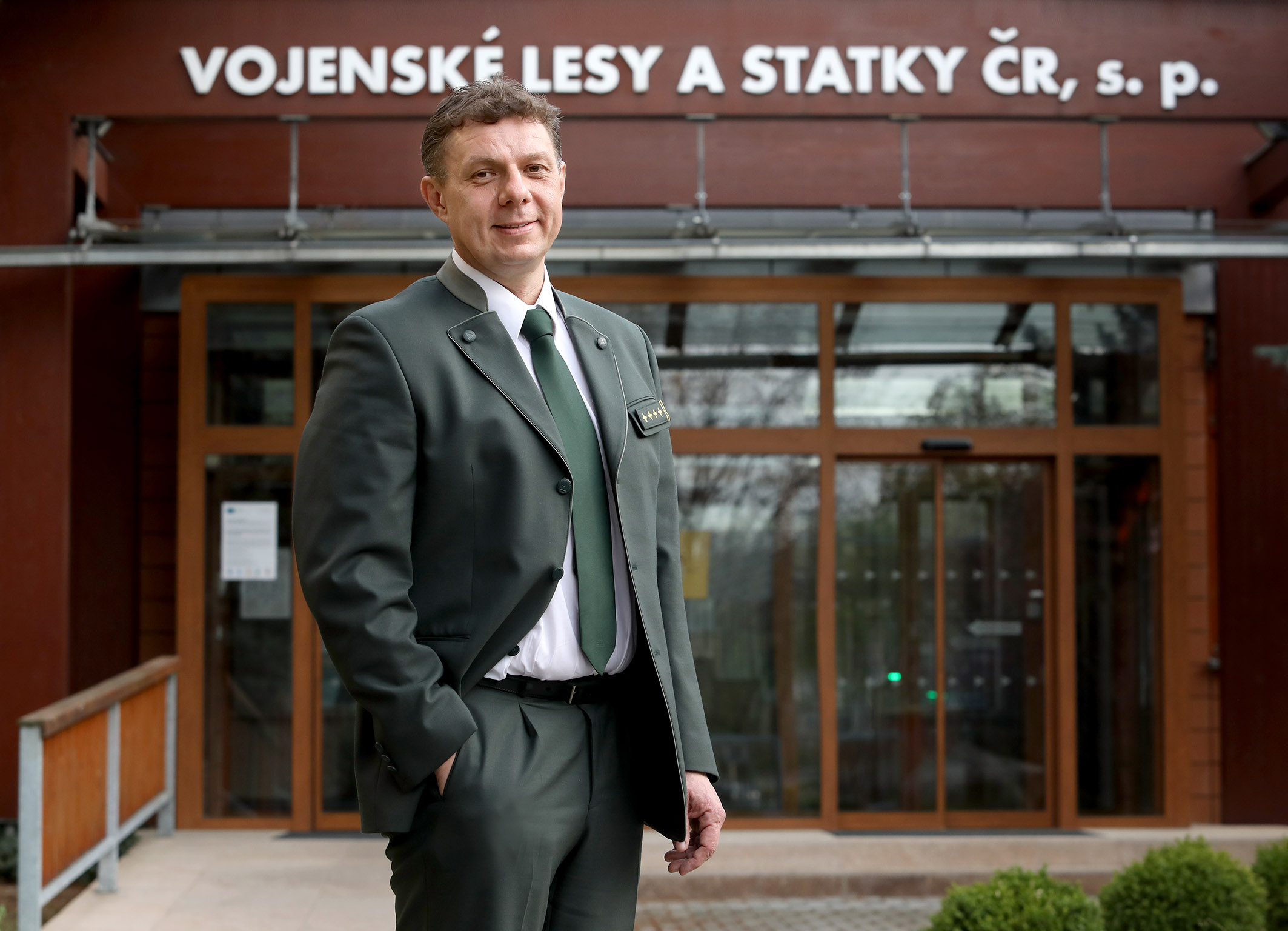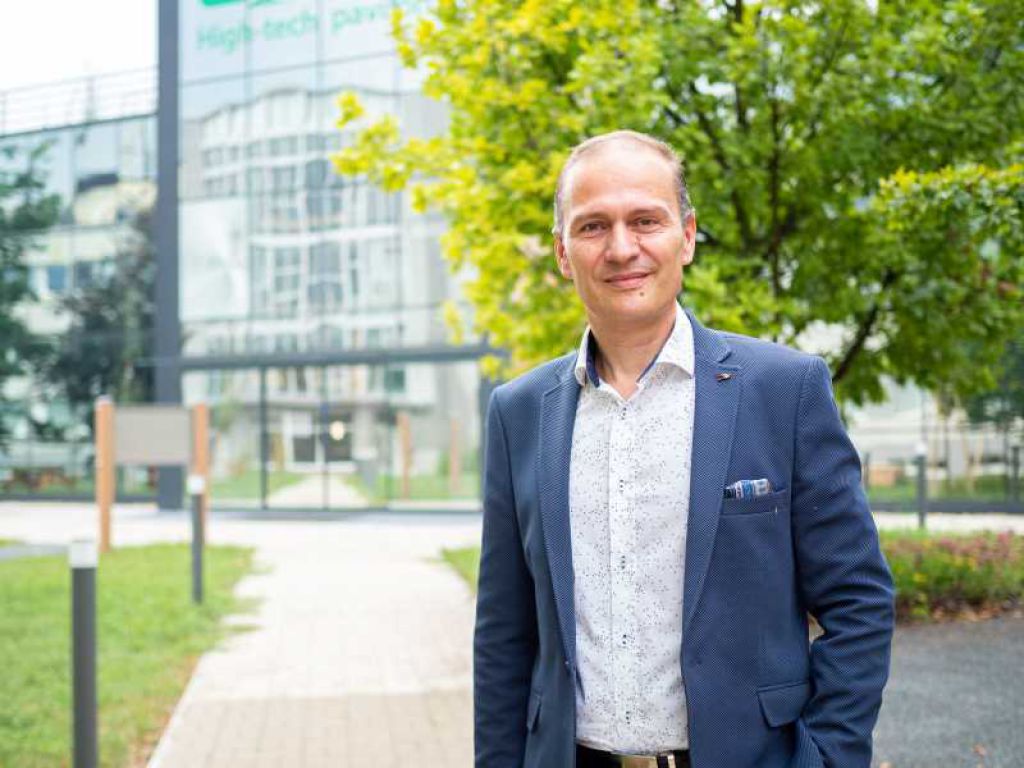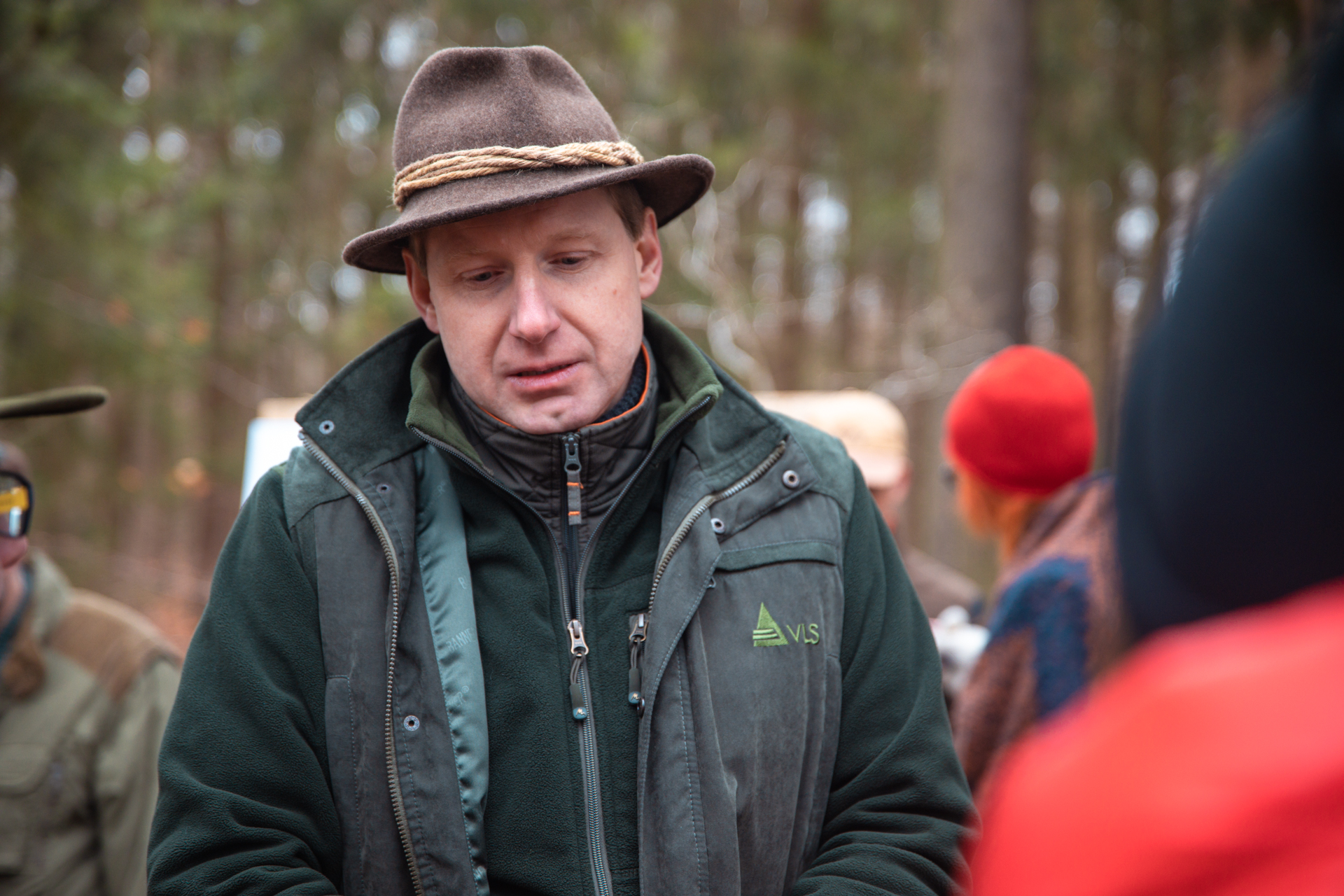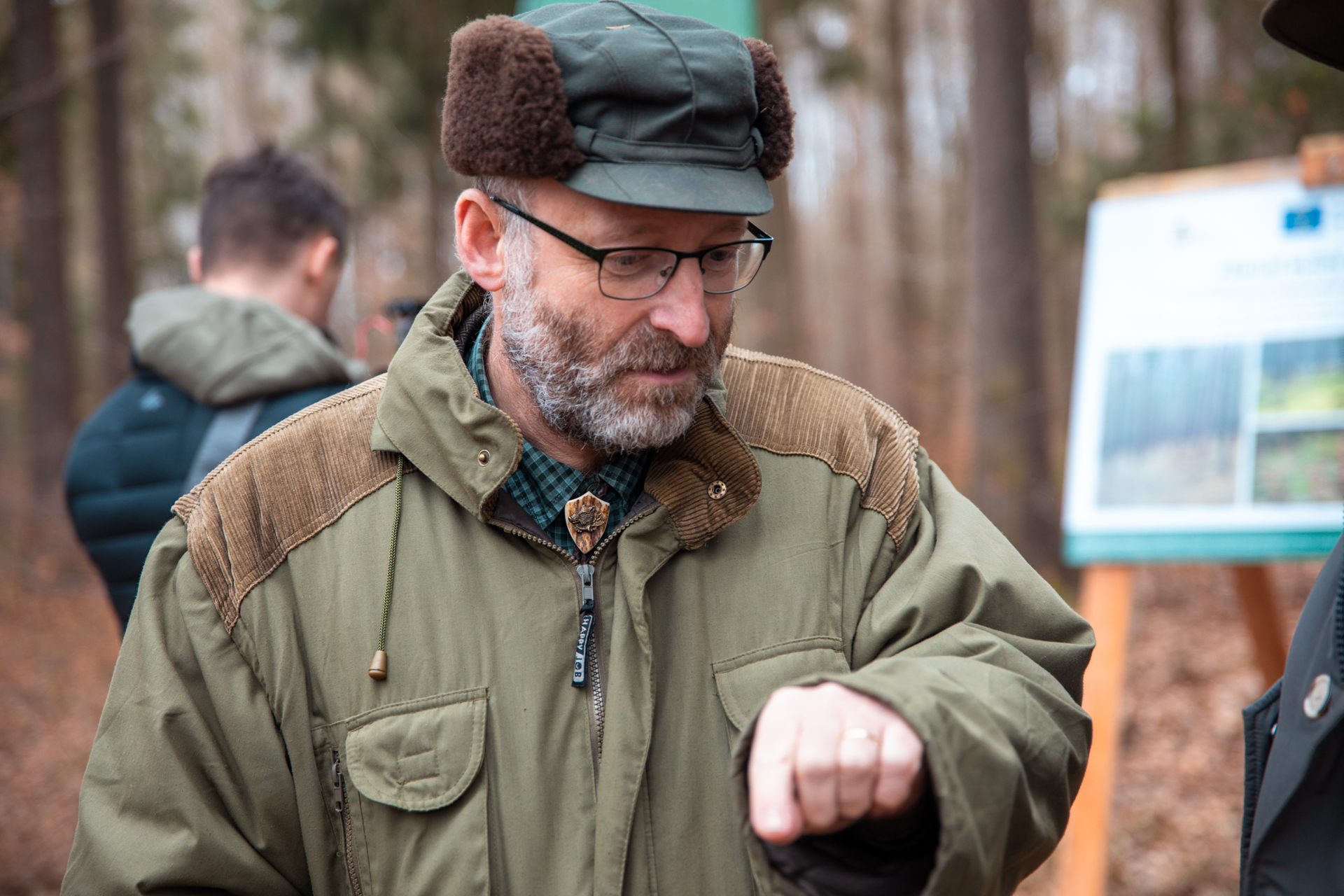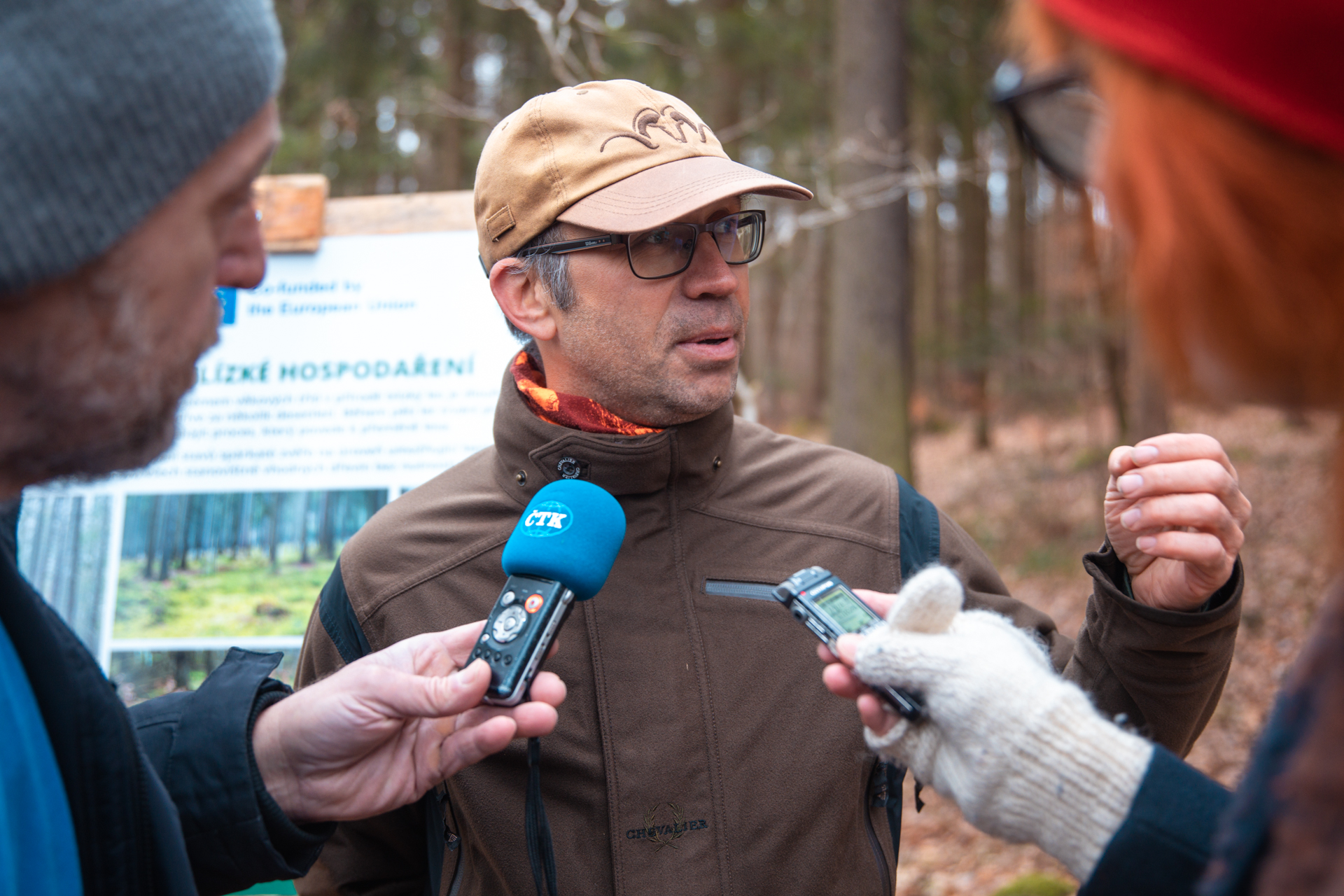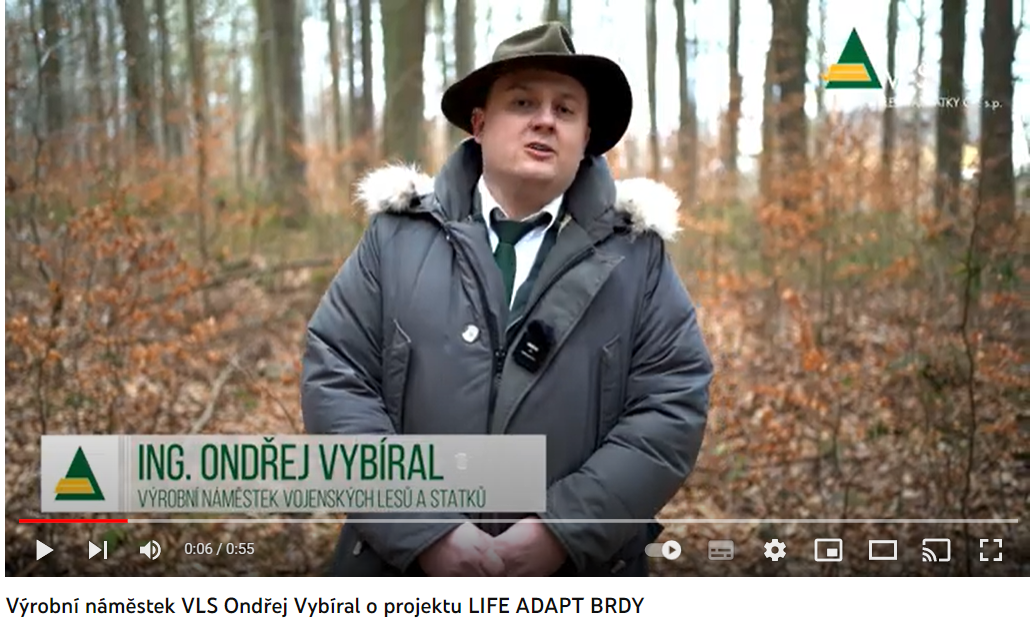LIFE ADAPT BRDY
Project name: Climate Change Adaptation of Forests in the Brdy Highland
Acronym: LIFE Adapt Brdy
Project coordinator: Military Forests and Estates of the Czech Republic, State Enterprise (VLS)
Partners:
Czech University of Life Sciences Prague – Faculty of Forestry and wood Sciences, Forestry and Game Management Research Institute (FGMRI), Staatsbetrieb Sachsenforst
Total eligible costs: 4 977 415 EUR
Contribution of EC: 2 986 449 EUR
Total eligible costs of VLS: 4 432 044 EUR
Project implementation date: 1. 1. 2023 – 31. 12. 2027
Programm name: LIFE
More information: Web site
No large areas of monocultures, but richly structured forests of varied species and age composition. No clear-cut areas caused by clear-cut logging system, but sophisticated shelterwood management systems, where foresters promote the internal dynamics of the stands through sensitive interventions. This gives space for a new generation of forests without the need for clear-cutting, while preserving the microclimate of the parent stands. This forest management model will be pursued in the coming years by Vojenské lesy a statky ČR, s.p (“the VLS”, in English also "Military Forests and Farms of the Czech Republic") in Brdy and subsequently in other areas.
The project is absolutely unique. Close-to-nature forest management has never been implemented in such a concept over such a large area. We are ready to share our experience with other forest owners and managers.
The foresters will use the support from the EU LIFE programme (financing activities related to the conservation of nature and the landscape, the environment and climate) to speed up the transition from conventional clear-cut management to methods that are much closer to nature and more friendly to the environment. This unique project will be implemented in the Brdy region. The VLS is investing more than CZK 120 million in total. An amount of CZK 73 million will be covered by funds from the LIFE programme, which the company views as recognition of the trend it has established.
"In Brdy, and successively in other localities, we are shifting on a much larger scale to a well-proven model of forest management with maximum promotion of natural processes. This confirms in practice our ambition to become the national leader in the introduction of close-to-nature but at the same time sustainable management systems not only in forests but in the entire landscape. Step by step, yet at a brisk pace, we will transform the predominating spruce monocultures in Brdy and other areas into new forests diverse in species, space, and age. Such forests will differ from those established by our ancestors over the centuries using traditional age-class forest management. We will make maximum use of the natural processes, particularly those of natural regeneration. At the same time, we will ensure the permanent preservation of the production functions of the forest," says Roman Vohradský, Director of the VLS.
The methodical partners of the project of the VLS are on the Czech side the Faculty of Forestry and Woo d Sciences of the Czech University of Life Sciences Prague and the Forestry and Game Management Research Institute – Forest Research Station Opočno. The State Forests of Saxony (Staatsbetrieb Sachsenforst) is an important foreign partner, which has been implementing shelterwood management practices for more than 30 years on the northern slopes of the Krušné hory Mountains (the Ore Mountains), where foresters from Brdy also come to gain valuable experience.
"The operational forest inventory, which will be carried out in the first phase of the project, will serve as the basis for the management transformation. It will be followed by the preparation of framework forest management guidelines developed for individual types of forest development and methodological manuals for the forest staff. The project anticipates that the achieved results and experience verified in practice will be shared by the VLS with other forest managers through professional events and publications not only in the Czech Republic," added Róbert Marušák, Dean of the Faculty of Forestry and Wood Sciences of the Czech University of Life Sciences Prague.
According to the authors of the project, the transition to close-to-nature forest management will require several significant changes. Therefore, the project comprises, among other activities, a study on the retention and restoration of selected spring areas to improve the water balance over the entire 22,600 ha of land.
The study will identify spring areas suitable for restoration, following the example of the LIFE for MIRES project (Transboundary restoration of mires for biodiversity and landscape hydrology in Šumava and Bavarian Forest), which is being implemented by the Šumava National Park.
"The close-to-nature forest management system has never been conceptualized in such a large area in the country. Brdy is the largest forest ecosystem in Central Bohemia and the Military Forests and Farms of the Czech Republic, as a full-scale manager of the landscape, managing forests, water bodies, agricultural and hunting areas, holds all the important tools for the desired change. In this respect, LIFE ADAPT BRDY is undoubtedly a unique and breakthrough project, at least in the Czech Republic," added David Novotný, Director of the VLS Hořovice Division.
"A thoughtful and consistent reduction of cloven-hoofed game is an absolutely essential process required for the successful implementation of these state-of-the-art forest management practices. Without this, natural regeneration of a wide range of habitat-suitable tree species is unthinkable," explained Jiří Novák, researcher from the Forest Research Station Opočno (Forestry and Game Management Research Institute).
The transition to forest stands diverse in age and species, which are much more resilient to climate change, is a long process. It will have a gradual effect on the appearance of Brdy over a period of decades. Attentive visitors will, however, be able to notice the first changes at so-called demonstration plots in the coming years.
These are areas where the VLS has already initiated or will soon initiate forest regeneration applying selection management, which may be considered the best practice in terms of shelterwood management. The project envisages establishing at least ten of these demonstration plots in the pilot phase, each covering approximately 50 hectares. The total area of demonstration plots shall reach minimum 500 ha.
"The VLS is becoming the leader in this type of forest management as it has already abandoned the clear-cut system and shifts towards the real environmentally friendly practices", said Ondřej Vybíral, the Production Manager of VLS, at the field press conference to inaugurate the LIFE ADAPT BRDY project. For more, see the video below.
Close-to-nature forest management seeks to enhance the stability and resilience of forests to such an extent that economic yields can be maintained. In contrast to the management of even-aged stands, where monocultures unified in age and often in species are established, harvesting is carried out here using shelterwood or selection management. The higher economic demands of the close-to-nature and more environmentally friendly management are compensated by the maximum involvement of natural processes with significantly lower reforestation costs.
Vojenské lesy a statky ČR, s.p. (Military Forests and Farms of the Czech Republic) is a state enterprise with almost a century of history. It manages about 140 thousand hectares of military land and other areas of strategic importance for national defence. The enterprise manages six large natural sites in Šumava (Boletice Military Area), in Brdy (Jince Garrison Training Area and Brdy Protected Landscape Area), in the Doupovské hory Mountains in the Karlovy Vary Region (Hradiště Military Area), in Ralsko and Mladá, in the Drahanská vrchovina Highlands in the Vyškov Region (Březina Military Area) and in the Oderské vrchy Hills in the Olomouc Region (Libavá Military Area). The natural sites managed by the VLS are among the most preserved forest complexes in the Czech Republic and in Europe. In addition to forestry and game management, the VLS is also involved in organic farming and fish culture. It also provides security and cleaning services for the Ministry of Defence, as well as other services for the national armed forces.
The LIFE programme is a funding instrument of the European Union. Its purpose is to contribute to the transition to sustainable, circular and energy-efficient management based on renewable energy sources. It aims to protect, restore and enhance the quality of the environment, including air, water and soil, halt and reverse the loss of biodiversity, and address ecosystem degradation. Since 1992, this funding programme has contributed more than €5.9 billion to the implementation of 5,500 cutting-edge projects in the field of the environment and climate change across the EU. For more detail, click here.
"Co-fundedby the European Union and the Ministry of the Environment. Views and opinionsexpressed are however those of the author(s) only and do not necessarilyreflect those of the European Union and the Ministry of theEnvironment or CINEA. Neither the European Union, the Ministry of theEnvironment nor the granting authority can be held responsible for them."

